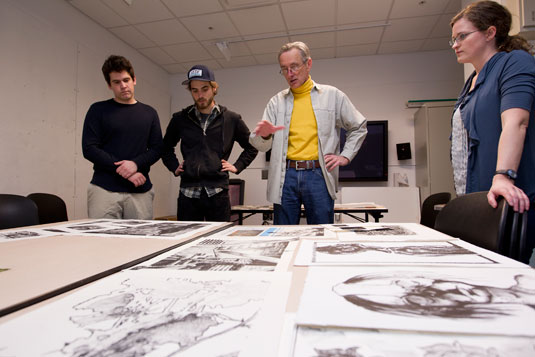Active studio inspires printmaking professor’s classroom approach

Although technology has changed since Daniel Dallmann began teaching printmaking, painting and drawing at Tyler in 1969, there are some basic elements of artistry that have become fundamental to his teaching philosophy.
“I have always viewed teaching as something far more important than simply passing on the fundamentals of craft and technique,” Dallmann said. “I believe the real subjects that I teach are creativity, critical and visual thinking and emotional involvement and enthusiasm.”
During studio classes, Dallmann works to encourage students to allow the possibilities of their creativity to take shape. Through interaction with his students and a constant exchange of ideas, he tries to teach students to hone their artistic abilities.
“Professor Dallmann works to instill a passion for art in students and generates great excitement through the courses he teaches,” said former student Karen Oremus, chair of the Department of Art and Design at Zayed University, in the United Emirates. “The importance of maintaining a fresh approach and attitude towards teaching a creative work was his constant concern.”
In addition to conventional methods of printmaking, Tyler’s new printmaking studio — which Dallmann helped design — gives students access to more modern tools of the trade. Located on Tyler’s third floor, the large studio space is equipped with state-of-the-art printers and computers.
“A student can work on an antique printing press, which hasn’t changed for centuries, while using a computer programmed to transmit digital images and designs from artists around the world,” said Dallmann.
Dallmann’s teaching is complemented by his belief that the most important tool for the effective art professor is to maintain an active studio practice. During his tenure at Temple, he has continued to exhibit his paintings in art galleries in New York and Philadelphia. His latest collection of self-images reflect his personal exploration of his various identities.
“For 40 years I have been looking outward at the world to find the subjects for my art as well as a way to satisfy the desire for self expression,” he said. “Recently I began a series of paintings that turned that idea inside-out.
“Not a novel idea by any means, but I found that by subverting the outward gaze with a mirror, it returns to provide me with the means to look inward, past likeness, to find diverse manifestations of myself.”